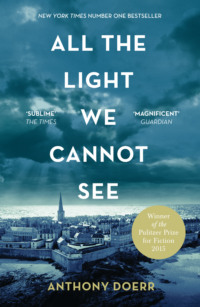All the Light We Cannot See

Полная версия
All the Light We Cannot See
Жанр: книги о войнеисторическая литературасовременная зарубежная литератураклассическая прозасерьезное чтениеоб истории серьезно
Язык: Английский
Год издания: 2019
Добавлена:
Настройки чтения
Размер шрифта
Высота строк
Поля
Конец ознакомительного фрагмента
Купить и скачать всю книгу





